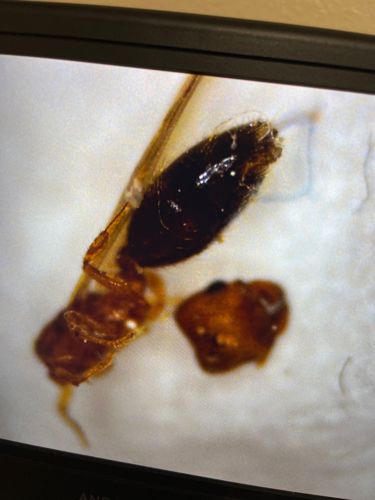Flying Ant (likely an Alate Ant Queen)
Scientific Name: Formicidae (subfamily Ponerinae or Myrmicinae, given the body shape, but difficult to narrow down to genus/species from this image alone)
Order & Family: Order: Hymenoptera, Family: Formicidae
Size: Varies significantly by species, but typically 3mm to 15mm for alate ants, with queens generally larger than males or workers.

Natural Habitat
Found globally in almost all terrestrial habitats. Nests can be in soil, under rocks, in wood, and within structures. Flying ants are typically observed outside their nests during mating flights.
Diet & Feeding
Ants have diverse diets depending on the species. Many are omnivores, feeding on sugars (nectar, honeydew from aphids), proteins (other insects, dead animals), fats, and fungi. Queens, before establishing a colony, rely on their muscle reserves (from wings shed after mating) for sustenance while laying the first eggs.
Behavior Patterns
Flying ants, especially swarmers, emerge from colonies to mate. This usually occurs during warm, humid weather. They are attracted to lights and can be seen in large numbers for a short period.
Risks & Benefits
Potential Risks: Some species can bite or sting (e.g., fire ants). Nuisance pests if they enter homes during swarming. Benefits: Ants play crucial roles in their ecosystems, including soil aeration, seed dispersal, predation of other insects, and decomposition.
Identified on: 9/4/2025